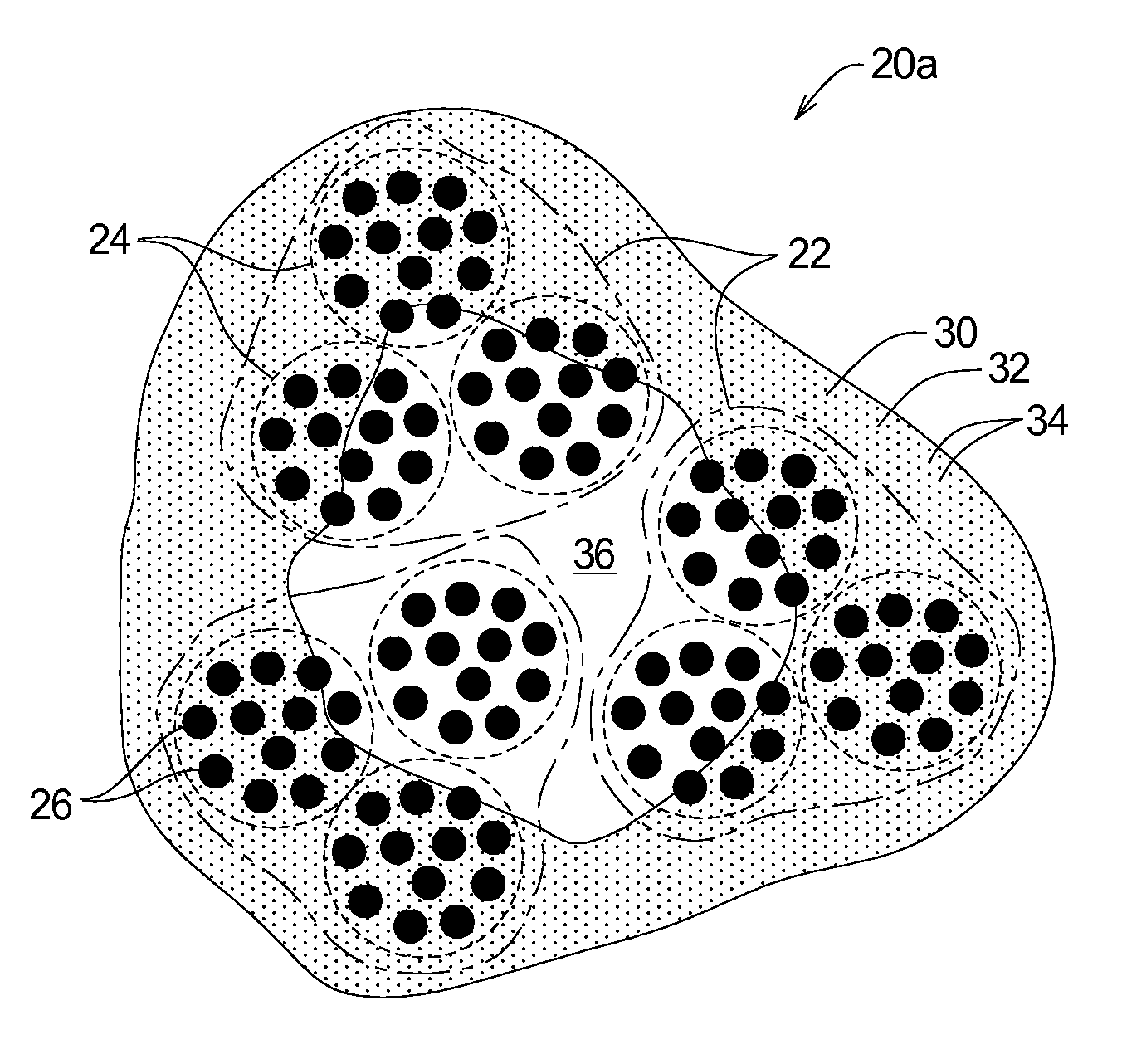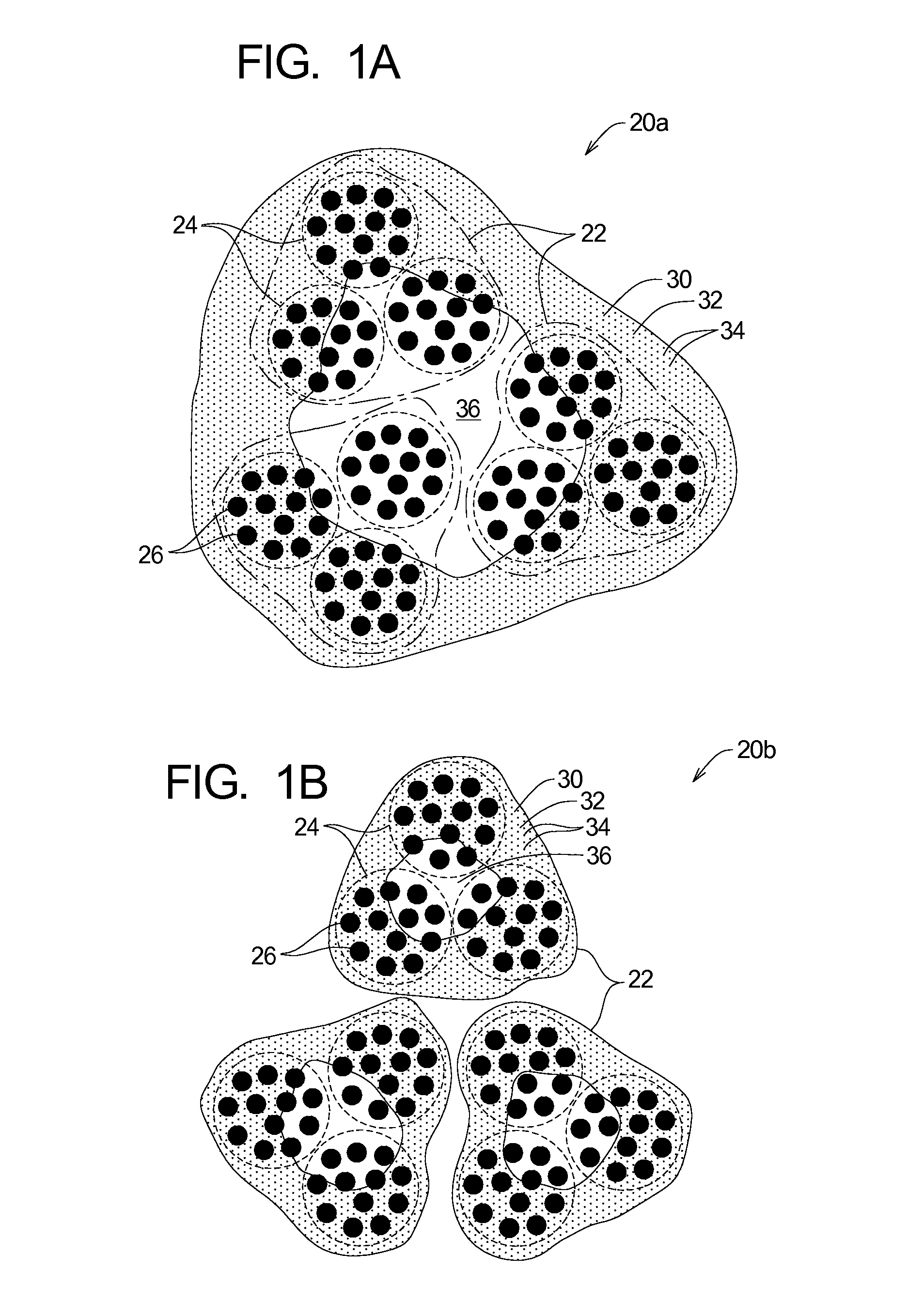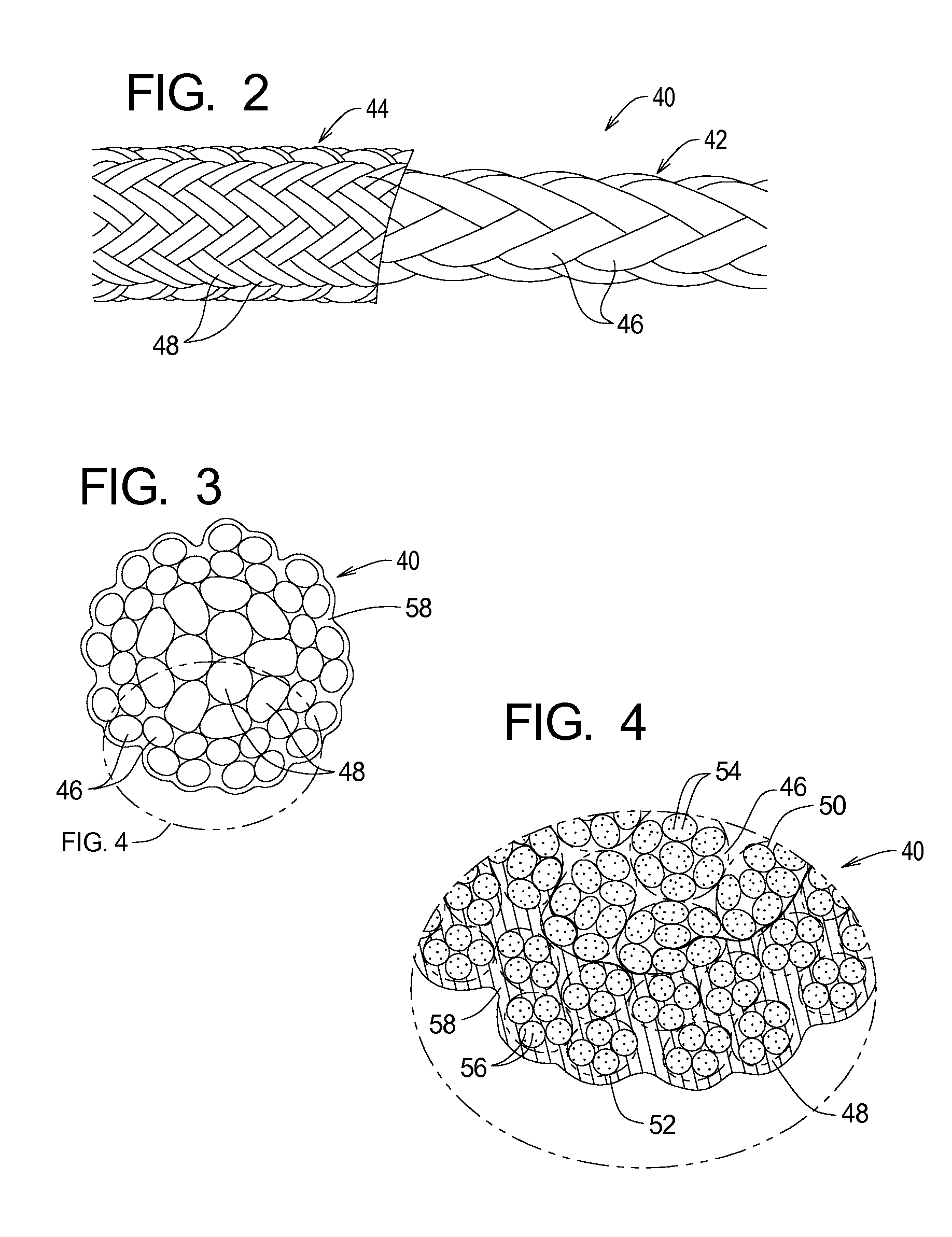Rope structure with improved bending fatigue and abrasion resistance characteristics
a technology of abrasion resistance and bending fatigue, applied in the field of ropes, can solve the problems of affecting the performance of the lifting line, subjected to bending fatigue and abrasion, etc., and achieve the effects of reducing friction between adjacent fibers
- Summary
- Abstract
- Description
- Claims
- Application Information
AI Technical Summary
Benefits of technology
Problems solved by technology
Method used
Image
Examples
first specific rope example
[0037]Referring now to FIGS. 2, 3, and 4, those figures depict a first specific example of a rope 40 constructed in accordance with the principles of the present invention. As shown in FIG. 2, the rope 40 comprises a rope core 42 and a rope jacket 44. FIG. 2 also shows that the rope core 42 and rope jacket 44 comprise a plurality of strands 46 and 48, respectively. FIG. 4 shows that the strands 46 and 48 comprise a plurality of yarns 50 and 52 and that the yarns 50 and 52 in turn each comprise a plurality of fibers 54 and 56, respectively. FIGS. 3 and 4 also show that the rope 40 further comprises a coating material 58 that forms a matrix that at least partially surrounds at least some of the fibers 54 and 56.
[0038]The exemplary rope core 42 and rope jacket 44 are formed from the strands 46 and 48 using a braiding process. The example rope 40 is thus the type of rope referred to in the industry as a double-braided rope. The strands 46 and 48 may be substantially identical in size an...
second rope example
[0039]Referring now to FIGS. 5, 6, and 7, those figures depict a second example of a rope 60 constructed in accordance with the principles of the present invention. As perhaps best shown in FIG. 6, the rope 60 comprises a plurality of strands 62. FIG. 7 further illustrates that each of the strands 62 comprises a plurality of yarns 64 and that the yarns 64 in turn comprise a plurality of fibers 66. FIGS. 6 and 7 also show that the rope 60 further comprises a coating material 68 that forms a matrix that at least partially surrounds at least some of the fibers 66.
[0040]The strands 62 are formed by combining the yarns 64 using any one of a number of processes. The exemplary rope 60 is formed from the strands 62 using a braiding process. The example rope 60 is thus the type of rope referred to in the industry as a braided rope.
[0041]The strands 62 and yarns 64 forming the rope 60 may be substantially identical in size and composition. However, strands and yarns of different sizes and com...
third rope example
[0042]Referring now to FIGS. 8, 9, and 10, those figures depict a third example of a rope 70 constructed in accordance with the principles of the present invention. As perhaps best shown in FIG. 9, the rope 70 comprises a plurality of strands 72. FIG. 10 further illustrates that each of the strands 72 comprises a plurality of yarns 74, respectively. The yarns 74 are in turn comprised of a plurality of fibers 76. FIGS. 9 and 10 also show that the rope 70 further comprises a coating material 78 that forms a matrix that at least partially surrounds at least some of the fibers 76.
[0043]The strands 72 are formed by combining the yarns 74 using any one of a number of processes. The exemplary rope 70 is formed from the strands 72 using a twisting process. The example rope 70 is thus the type of rope referred to in the industry as a twisted rope.
[0044]The strands 72 and yarns 74 forming the rope 70 may be substantially identical in size and composition. However, strands and yarns of differe...
PUM
| Property | Measurement | Unit |
|---|---|---|
| Fraction | aaaaa | aaaaa |
| Percent by mass | aaaaa | aaaaa |
| Percent by mass | aaaaa | aaaaa |
Abstract
Description
Claims
Application Information
 Login to View More
Login to View More - R&D
- Intellectual Property
- Life Sciences
- Materials
- Tech Scout
- Unparalleled Data Quality
- Higher Quality Content
- 60% Fewer Hallucinations
Browse by: Latest US Patents, China's latest patents, Technical Efficacy Thesaurus, Application Domain, Technology Topic, Popular Technical Reports.
© 2025 PatSnap. All rights reserved.Legal|Privacy policy|Modern Slavery Act Transparency Statement|Sitemap|About US| Contact US: help@patsnap.com



